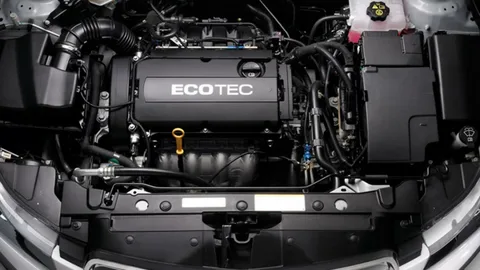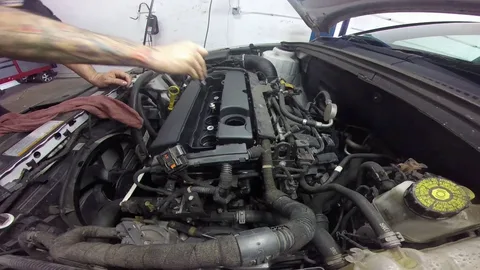If you own a Holden Cruze, you may be familiar with the importance of the purge valve in your vehicle’s emissions control system. The Holden Cruze Purge Valve plays a crucial role in controlling the flow of fuel vapors from the fuel tank to the engine, helping to reduce harmful emissions. In this ultimate guide, we will dive deep into understanding the Holden Purge Valve, common symptoms of a faulty valve, diagnosing problems, step-by-step replacement guide, preventive maintenance tips, testing for functionality, and frequently asked questions.
Understanding the Holden Cruze Purge Solenoid
The Holden Cruze Purge Solenoid, an integral part of your vehicle’s evaporative emission control (EVAP) system, is designed to manage the flow of gasoline fumes from the fuel tank to the engine for combustion, rather than allowing them to escape into the atmosphere. This component, essentially a type of electrically-operated valve, is crucial for the vehicle’s ability to comply with emissions standards by preventing the release of volatile organic compounds (VOCs) into the environment.
When the engine is running and conditions are optimal, the vehicle’s computer system (the Engine Control Module or ECM) signals the purge solenoid to open. This action allows stored fuel vapors to be sucked into the engine’s intake manifold and subsequently burned during the combustion process. Conversely, when the vehicle is off, the purge solenoid is closed, trapping the fumes in the charcoal canister, a component of the EVAP system designed to absorb and store the vapors.
A properly functioning Holden Purge Solenoid is vital not only for reducing emissions but also for maintaining the overall performance of the vehicle. A faulty solenoid can lead to a variety of problems, including an illuminated check engine light, poor fuel economy, and even potential issues with starting your vehicle. Understanding its operation and role within your Holden Cruze is key to identifying early signs of trouble and addressing them before they escalate into more significant issues, ensuring your vehicle remains efficient and environmentally friendly.
 Common Symptoms of a Faulty 1.4 Cruze Purge Valve
Common Symptoms of a Faulty 1.4 Cruze Purge Valve
When the 1.4 Cruze Purge Valve starts to malfunction, it’s crucial to recognize the signs early to prevent further damage to your vehicle. One of the most immediate indicators is an erratic idle; the engine may struggle to maintain a consistent speed, often resulting in rough or fluctuating idling. Additionally, the engine may stall unexpectedly, particularly at low speeds or when coming to a stop, highlighting potential issues with the purge valve’s operation.
Starting the vehicle can also become a challenge. If the purge valve is stuck open, excessive fuel vapors can flood the engine, making it hard to start. On the other hand, a valve that’s stuck closed can lead to a buildup of pressure and vapors in the fuel system, also affecting the startup process.
A noticeable decrease in fuel efficiency is another symptom that shouldn’t be ignored. When the purge valve fails to operate correctly, it can disrupt the optimal air-fuel mixture in the engine, leading to increased fuel consumption.
Perhaps one of the most telling signs of a faulty purge valve is the activation of the check engine light on your dashboard. This indicator, while general, can point to a diagnostic trouble code (DTC) related to the EVAP system, often linked to the purge valve. Lastly, a strong odor of fuel around your vehicle or hissing sounds from the engine bay are tell-tale signs of a compromised purge valve, hinting at leaks or improper sealing within the EVAP system. Recognizing these symptoms early can save you from more severe complications down the line.
Diagnosing Problems with the Purge Valve
Diagnosing issues with the Holden Purge Valve requires a systematic approach to identify and rectify the source of the problem. The first step in the diagnostic process involves utilizing a scan tool or OBD-II scanner to connect to the vehicle’s onboard diagnostics system. This tool can read any trouble codes that the car’s computer may have stored, which can indicate whether the purge valve is functioning correctly or if there are related issues within the EVAP system. Common codes related to purge valve dysfunction include P0441, P0442, and P0455, each providing insights into potential leaks or performance concerns.
A visual inspection forms the next crucial step. Examine the purge valve and surrounding EVAP system components for signs of physical damage, wear, or improper connections. Look closely for cracks or breaks in the valve itself, as well as any disconnected, damaged, or clogged vacuum hoses that could affect the system’s integrity.
Additionally, manual testing of the valve’s operation can offer valuable diagnostic information. This can be done by applying a specific voltage to the valve (according to manufacturer guidelines) to see if it opens and closes correctly. Another effective method is to perform a smoke test on the EVAP system, which can reveal hidden leaks by observing where smoke escapes from the system.
These diagnostic procedures, when performed thoroughly, can pinpoint the specific issue with the Holden Purge Valve, guiding you towards an appropriate solution, whether it’s repair or replacement. Remember, addressing the problem early can prevent more significant issues with the vehicle’s performance and emissions control system.
Step-by-Step Guide to Replacing the Holden Purge Valve
Replacing the purge valve in your Holden Cruze is a straightforward process that requires minimal tools and can be done in your garage or driveway. Here’s a detailed step-by-step guide to help you successfully replace the purge valve:
- **Safety First**: Begin by ensuring the vehicle is parked on a level surface, the engine is turned off, and the keys are removed. Wait for the engine to cool down to avoid any burns.
- **Locate the Purge Valve**: The purge valve is usually located near the throttle body, on top of the engine, or close to the fuel tank. Refer to your vehicle’s service manual for the exact location.
- **Disconnect the Battery**: To prevent any electrical short circuits, disconnect the negative terminal of the battery.
- **Remove Electrical Connector and Vacuum Lines**: Carefully disconnect the electrical connector from the purge valve. There may be a small tab you need to press or slide to release the connector. Next, remove any vacuum lines attached to the purge valve. Note how they are connected to ensure correct reinstallation.
- **Uninstall the Old Purge Valve**: The purge valve is typically mounted with bolts or clips. Use the appropriate tool, such as a socket wrench or pliers, to remove these fasteners and take out the old valve.
- **Install the New Purge Valve**: Position the new purge valve where the old one was located. Secure it in place using the original fasteners. Ensure it’s snug but not overtightened, which might damage the valve or its mounting.
- **Reattach Vacuum Lines and Electrical Connector**: Connect the vacuum lines and the electrical connector back to the new purge valve. Make sure the connections are secure to prevent any leaks or disconnections.
- **Reconnect the Battery and Test**: After the new purge valve is installed, reconnect the battery’s negative terminal. Start the engine to ensure everything is working correctly. It’s a good practice to use an OBD-II scanner to check if there are any error codes that need to be cleared.
- **Monitor Performance**: In the days following the replacement, pay attention to your vehicle’s performance, ensuring there are no irregularities such as rough idling or difficulty starting, which could indicate an issue with the installation.
By following these steps, you’ll ensure that your Holden Cruze runs efficiently and remains in compliance with emission standards, all while saving you a trip to the mechanic.
Preventive Maintenance to Avoid Purge Valve Issues
Ensuring the longevity and proper functioning of the Holden Purge Valve starts with diligent preventive maintenance. Regularly inspect the valve and associated EVAP system components for any signs of deterioration or damage. Such a proactive approach can help identify potential issues before they escalate. Keeping the fuel system clean is paramount.
Accumulation of dirt or debris can hinder the purge valve’s performance, leading to inefficiencies or failures. It’s also advisable to be mindful of the installation and condition of aftermarket parts, as they can inadvertently affect the purge valve’s operation.
Routine checks should include verifying the tightness and integrity of vacuum lines and electrical connections, as loose or damaged components can mimic or cause purge valve malfunctions. Adhering to these maintenance practices not only aids in avoiding unnecessary purge valve complications but also contributes to the overall health and efficiency of your vehicle’s emission control system.
Testing the Holden Purge Valve for Functionality
After installing a new purge valve in your Holden Cruze, verifying its proper operation is a critical step to ensure your vehicle’s emission system is functioning efficiently. One effective method is to use an OBD-II scanner to monitor real-time data and verify that the valve is responding correctly to the engine control module’s commands.
This tool allows you to see if the valve is opening and closing at the appropriate times, thereby confirming its functionality. Another approach is conducting a vacuum test on the valve and the surrounding system. This involves applying vacuum pressure to the valve and observing if it holds pressure without leaking.
Any drop in pressure would indicate a leak or a malfunction, which requires further investigation. These testing methods provide peace of mind, ensuring the newly installed purge valve is contributing to the optimal performance of your vehicle’s emissions control system, maintaining environmental standards and vehicle efficiency.
FAQS
Q: When is the right time to replace the Holden Purge Valve?
A: Replacement of the purge valve is generally dictated by the onset of symptoms indicating malfunction, such as erratic idling, difficulty starting the vehicle, decreased fuel efficiency, or an illuminated check engine light. There’s no preset mileage or time interval for replacement, as its longevity can vary based on vehicle usage and maintenance.
Q: Can cleaning the purge valve be an effective solution instead of replacing it?
A: Cleaning might offer a temporary fix for minor issues, but it’s not a guaranteed or permanent solution. If the valve exhibits signs of significant wear or damage, or if cleaning does not resolve the issue, replacement is the recommended course of action to ensure the proper functioning of the vehicle’s emissions control system.
Q: Is it advisable to opt for aftermarket purge valves for the Holden Cruze?
A: Aftermarket purge valves are indeed available and can be a cost-effective alternative to OEM parts. However, it’s crucial to verify that the aftermarket option is compatible with your specific Holden Cruze model and meets the necessary quality standards. In some cases, inferior aftermarket parts may not perform as well as their OEM counterparts, potentially leading to further issues down the line.
Conclusion
In wrapping up our comprehensive guide, it’s evident that the purge valve is integral to the emission system of the Holden Cruze, playing a pivotal role in controlling vehicle emissions and ensuring the engine runs efficiently. Recognizing the symptoms of a malfunctioning Purge valve and taking timely action is key to avoiding more severe issues. With the knowledge on diagnosing these problems, coupled with a detailed replacement procedure and maintenance tips provided in this guide, you are well-equipped to handle common purge valve concerns. Additionally, understanding how to test the functionality of a newly installed valve reinforces the reliability of your repairs and maintenance efforts.
| Related Business Listings |
| Contact Directory |
| Local Business Profiles |

